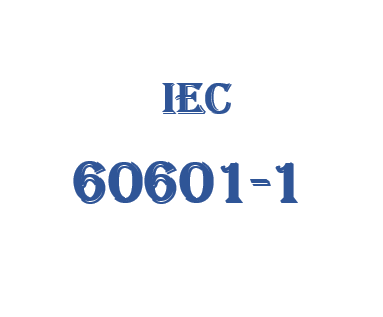IEC 60601-1 Instability Hazards
Hi friends!!!
In our previous blogs, we have discussed about the following topics.
IEC 60601-1 Classification of Medical Electrical Equipment
IEC 60601-1 General Requirements for Testing Medical Electrical Equipment
IEC 60601-1 Medical Electrical Systems
IEC 60601-1 Protection against unwanted and excessive radiation hazards
IEC 60601-1 General Requirements
IEC 60601-1 Programmable Electrical Medical Systems
IEC 60601-1 Hazardous situations and fault condition
IEC 60601-1 Construction of Medical Electrical Equipment
IEC 60601-1 Leakage Currents and Patient Auxiliary Currents
IEC 60601-1 Creepage Distance and Air Clearance
IEC 60601-1 Components and Wiring
IEC 60601-1 Mechanical Hazards Moving Parts
IEC 60601-1 Excessive Temperatures
IEC 60601-1 Markings on the Outside of Medical Electrical Equipment
IEC 60601-1 Markings on the Inside of Medical Electrical Equipment
EU MDR Timeline, Annex, Chapter
EU MDR Post Market Surveillance
EU MDR Technical Documentation – Part 1
EU MDR Technical Documentation – Part 2
EU MDR General Safety and Performance Requirement
EU MDR Information on the Label
EU MDR Post Market Clinical Follow Up
EU MDR Unique Device Identification – Part 1
EU MDR Unique Device Identification – Part 2
EU MDR Chapter & Articles – Part 1
EU MDR Chapter & Articles – Part 2
In today’s blog, we are going to discuss about IEC 60601-1.
IEC 60601-1 states the Basic safety requirements for Medical Electrical Equipment’s. Satisfying the requirements of IEC 60601-1 is an important task in order to commercialize the Medical Electrical Equipment’s
Therefore, it is important for Medical Device QA/RA Professionals to know in detail about IEC 60601-1 Instability Hazards as per Sub Clause 9.4 of IEC 60601-1.
Let’s get into the topic.
IEC 60601-1 Instability Hazards
General
There shall not be any overbalance such as tip over or unexpected movement in the Medical Electrical Equipment or its parts which are supposed to be placed on the surface such as floor or table during normal use.
IEC 60601-1 Instability Hazards
Instability Overbalance
Instability in Transport Position:
There shall not be any overbalance when the Medical Electrical Equipment or its parts placed in any transport position of normal use, on a plane which is inclined at an angle of 10° from the horizontal plane of the surface.
Instability excluding Transport Position:
There shall not be any overbalance when the Medical Electrical Equipment or its parts placed in any position of normal use, excluding any transport positions, on a plane inclined at an angle of 5° from the horizontal plane of the surface.
If there is any overbalance when the Medical Electrical Equipment or its parts placed in any position of normal use, excluding any transport positions, on a plane inclined at an angle of 10° from the horizontal plane of the surface, then the Medical Electrical Equipment or its parts shall carry a warning notice stating that the transportation shall only be undertaken in a certain condition that shall be clearly stated in the instructions for use or marked on the Medical Electrical Equipment.
Instability from Horizontal and Vertical Positions:
There shall not be any overbalance when the Medical Electrical Equipment or its parts having a mass of 25 Kgs or more is being pushed, rested or leaned upon.
There shall not be any overbalance when the Medical Electrical Equipment or its parts, when it is being sat or stepped upon.
Castors and Wheels:
There shall not be more than 200N force required to move the mobile Medical Electrical Equipment along the hard and flat horizontal surface.
The Mobile Medical Electrical Equipment having more than 45 Kgs shall be able to pass over a threshold of 10 mm. This passing over shall not result in overbalancing.
Instability from Unwanted Lateral Movement
Instability in Transport Position:
The breaks of the power driven Mobile Medical Electrical Equipment shall be designed in such a manner that it can be activated normally and released only be the means of continuous actuation of the controls.
Any unwanted movement of Mobile Medical Electrical Equipment or its parts shall be prevented by fitting the equipment’s with means such a locking device.
The wheel locks or braking system shall be provided in the Mobile Medical Electrical Equipment to prevent an unwanted movement in an incline of 10° when it’s in the transport position.
Grips and other Handling Devices:
The suitable means of handling devices such as handles, lifting eyes etc shall be provided with the Medical Electrical Equipment other than portable equipment’s having a mass of more than 20 Kgs that need to be lifted during normal use or in transportation.
When the manufacturer specifies the Medical Electrical Equipment as Portable Equipment which is having mass of more than 20 Kgs shall have one or more carrying-handles which is placed suitably to enable the Medical Electrical Equipment to be carried by two or more persons.
Now I hope you have acquired some knowledge about IEC 60601-1 Instability Hazards. We will meet again with another valuable topic related to Biomedical Engineering, Medical Device, Healthcare.
NOTE: Dear friends!!!… Please do comment a topic related to Biomedical, so that we
can discuss it in future blogs.
Check out for this blog about Computed Tomography, X ray, MRI scan, ECG.
COMPUTED TOMOGRAPHY|TECHNOLOGY|ARTIFACTS
x ray machine working principle
DON’T FORGET TO FOLLOW THIS BLOG PAGE
DROP YOUR MAIL ID TO GET IMMEDIATE UPDATES
If you find this blog post knowledgeable, comment & share it with a friend!

